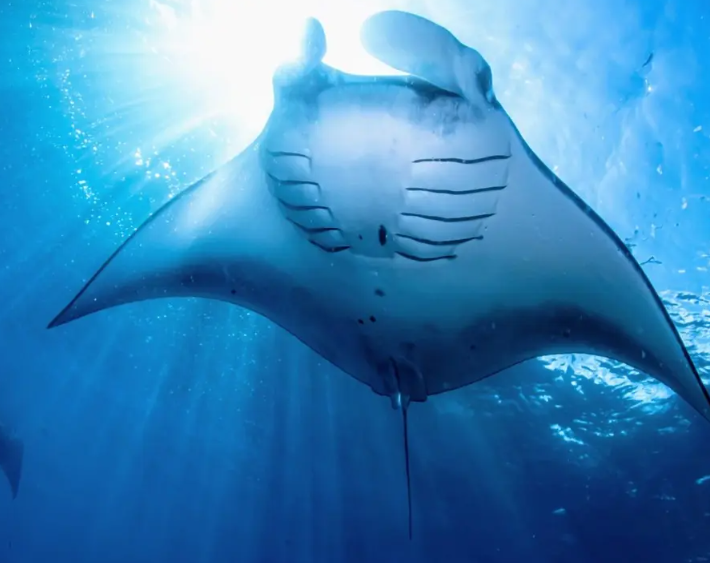Cross-flow filters are used in water treatment plants and other industries to separate particles from fluids. These filters work by allowing fluid to flow across a permeable membrane, with clean fluid passing through while particles are carried away into waste reservoirs.
“We want to expand the design space of traditional crossflow filtration with new knowledge from the manta ray,” explained lead author Xinyu Mao, an MIT postdoc.
By examining the ray’s filtration mechanism, the team identified new parameters for optimizing filter performance, particularly regarding the trade-off between permeability and selectivity.
Manta ray inspiration for water filters
Industrial filters often face a balancing act: filters with larger pores are highly permeable, allowing fluid to flow through easily but letting small particles escape. Filters with smaller pores, on the other hand, are more selective but require more energy to push fluid through.
The mobula ray’s feeding system offers a natural solution to this dilemma. The ray allows water to flow freely enough to breathe while retaining the plankton particles it feeds on.
“We asked ourselves, how do we do better with this trade-off between permeability and selectivity?” Hosoi said.
By studying the ray’s adaptations, the researchers discovered that vortices – tiny swirling flows of water – play a critical role in its feeding efficiency.
The key to efficient filtering
The team’s experiments showed that when water flows through the ray-inspired filter, it creates small vortices at the grooves of the plates. These vortices trap particles while allowing water to flow through unimpeded.
“This vortex is not blocking water, but it is blocking particles,” Hosoi explained. “At higher flow rates, particles try to get through the filter but are blocked by this vortex and are shot down the channel instead.”
The vortices even capture particles smaller than the spacing between the plates, forcing them to bounce across the plates into the ray’s cavity. This mechanism prevents particles from escaping while maintaining high water flow, a feature industrial filters could replicate.
Broader implications of the research
Using the mobula ray as a model, the researchers developed guidelines for designing cross-flow filters. Their blueprint specifies how factors like pore size, spacing, and flow rate can be adjusted to create vortices for optimal filtration.
“You want to design a filter such that you’re in the regime where you generate vortices,” Hosoi said. “Our guidelines tell you: If you want your plant to pump at a certain rate, then your filter has to have a particular pore diameter and spacing to generate vortices that will filter out particles of this size.”
The findings are particularly relevant to industries like water treatment, where filters must balance efficiency and sustainability.
Bridging nature and technology
During the COVID-19 pandemic, the team initially focused on designing face masks capable of filtering viruses. This work eventually shifted to studying natural filtration systems, leading them to the mobula ray.
The ray’s evolved mechanism provides a clear example of how nature can solve engineering challenges. By mimicking this system, industries can create more efficient filters that require less energy while maintaining high selectivity.
“The mobula ray is giving us a really nice rule of thumb for rational design,” Hosoi noted.
The study highlights the potential of biomimicry, where insights from the natural world inspire innovative technological solutions. With the mobula ray as a guide, engineers can refine filtration systems to meet modern demands for cleaner, more sustainable processes.
This research not only advances our understanding of filter-feeding animals but also paves the way for practical applications in technology and industry, demonstrating the profound value of learning from nature.
The study is published in the journal Proceedings of the National Academy of Sciences.




